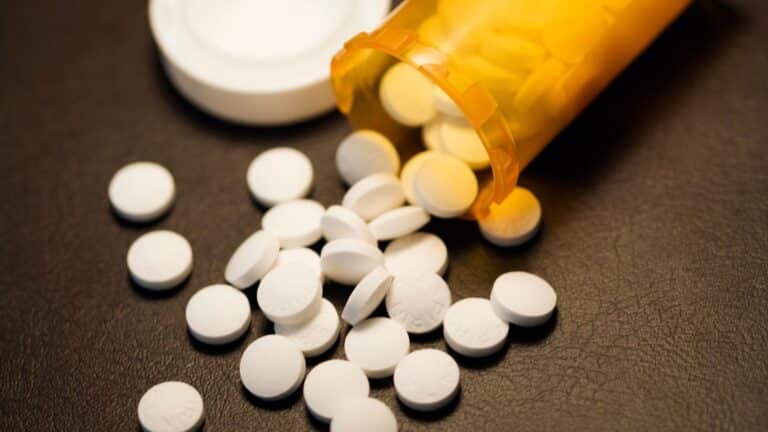Based on your readiness to pursue recovery, a suboxone treatment program can serve as a cornerstone of your path to lasting stability. At The Hope House, we integrate medication-assisted treatment with comprehensive care—spanning medically supervised detox, residential therapy, and outpatient support—to address opioid use disorder holistically. In this article, you will learn what suboxone therapy involves, why it is effective, how it fits within different levels of care at The Hope House, and what to expect as you move through induction, maintenance, and aftercare.
Understanding suboxone treatment program
A suboxone treatment program centers on medication-assisted treatment (MAT) using a combination of buprenorphine and naloxone. Buprenorphine is a partial opioid agonist that reduces cravings and withdrawal symptoms, while naloxone is an opioid antagonist that deters misuse when the medication is tampered with [1]. By pairing these compounds, your program can mitigate the cycle of dependence without producing the intense euphoric effects of full opioid agonists.
Induction and maintenance phases
Your journey begins with an induction phase, which requires you to abstain from other opioids for 12–24 hours to avoid precipitated withdrawal. A clinician will determine your initial suboxone dose and observe your response, adjusting as needed to alleviate discomfort. Once stabilized, you enter the maintenance phase, during which your dose may be modified over time to sustain craving control while minimizing side effects [2].
Eligibility and prescribing requirements
To qualify for buprenorphine-naloxone therapy, you must have a diagnosis of opioid use disorder based on DSM-5 criteria, which considers factors such as craving intensity, withdrawal symptoms, and impact on daily life [3]. In the United States, only healthcare providers with special certification under the Drug Addiction Treatment Act of 2000 can prescribe suboxone, ensuring you receive care from trained professionals [4].
Assessing treatment benefits
When integrated with supportive services, a suboxone program offers multiple advantages that improve both safety and retention.
- Manage withdrawal and cravings: Buprenorphine’s partial agonist profile smooths the transition off stronger opioids, reducing the severity of acute withdrawal.
- Prevent overdose: As a ceiling-effect agonist, it limits respiratory depression risk, lowering fatal overdose rates by approximately 50 percent when taken as directed [5].
- Enhance treatment retention: Clinical trials indicate that participants remain in medication-assisted treatment significantly longer than those receiving placebo, with benefits persisting through at least 24 weeks [4].
- Support comprehensive recovery: When combined with behavioral therapies, peer groups, and case management, suboxone increases the likelihood of sustained abstinence and quality-of-life improvements [2].
Based on our analysis, you are more likely to achieve stable outcomes when medication-assisted treatment is one component of a coordinated care plan.
Exploring program components
A robust suboxone program at The Hope House weaves together medication management, clinical monitoring, psychosocial therapies, and peer support. Consequently, you receive multidimensional care designed to address both physiological dependence and the behavioral patterns underlying addiction.
Medication management
Our clinicians conduct regular consultations to assess your response to suboxone, adjusting dosage and administration methods—sublingual film or tablet—according to your progress. We also monitor for any adverse effects such as mild headache or gastrointestinal discomfort.
Clinical monitoring
Routine urine drug screens and health assessments ensure adherence and detect potential drug interactions. We coordinate closely with primary medical providers to track co-occurring conditions like chronic pain or mental health disorders.
Co-occurring disorder treatment
If you face depression, anxiety, PTSD, or other mental health challenges alongside opioid dependence, our integrated care model includes psychiatric evaluation and medication management to address both simultaneously.
Peer support and education
You are encouraged to participate in peer-led groups such as SMART Recovery or Narcotics Anonymous, where shared experiences foster mutual accountability. Educational workshops on relapse prevention, nutrition, and stress management reinforce your skill set for long-term success.
Integrating detox and residential care
At The Hope House, suboxone therapy can commence immediately after medically supervised detox or within a residential treatment setting, ensuring continuity of care and reducing the risk of relapse.
| Level of care | Description | Link |
|---|---|---|
| Medically supervised detox | Stabilization and withdrawal management from substances | drug detox program |
| Residential drug rehab | 24/7 structured therapy, skill building, and peer support | residential drug rehab |
| Dual diagnosis residential treatment | Integrated approach for mental health and substance use disorders | dual diagnosis residential treatment |
In addition to general offerings, The Hope House provides specialized detox tracks:
- Opioid detox center: opioid detox center, heroin detox program, fentanyl detox treatment
- Stimulant detox programs: cocaine detox center, meth detox program
- Marijuana detox center: marijuana detox center
- Prescription drug detox: adderall detox program, ecstasy detox treatment
- Alcohol detox: alcohol detox program
Our expertise indicates that initiating suboxone during or immediately after detox maximizes your comfort and lowers the chances of early discontinuation.
Leveraging outpatient support
Once you transition out of residential care or choose outpatient as your primary setting, The Hope House offers multiple pathways to maintain suboxone therapy alongside counseling.
- Medication-assisted treatment program: medication-assisted-treatment-program
- Suboxone outpatient clinic: suboxone outpatient clinic
- Partial hospitalization program for addiction: partial hospitalization program for addiction
- Intensive outpatient program for addiction: intensive outpatient program for addiction
- Outpatient drug rehab: outpatient drug rehab
- Outpatient alcohol rehab: outpatient alcohol rehab
- Outpatient dual diagnosis treatment: outpatient dual diagnosis treatment
In addition, you can access step-down services such as step down rehab program to ease back into daily life while sustaining therapeutic momentum.
Incorporating therapy modalities
Medication alone rarely suffices for durable recovery. Consequently, The Hope House integrates a range of evidence-based and holistic therapies to address the psychological and relational dimensions of addiction.
- Individual therapy for addiction: individual therapy for addiction
- Group therapy for substance abuse: group therapy for substance abuse
- Family therapy for addiction recovery: family therapy for addiction recovery
- Therapy for dual diagnosis: therapy for dual diagnosis
- Addiction counseling services: addiction counseling services
- Holistic addiction treatment program: holistic addiction treatment program
Furthermore, our clinicians may recommend complementary activities—yoga, meditation, art, or music therapy—to foster mindfulness and creativity as part of a personalized care plan [2].
Addressing safety considerations
Although suboxone is well-tolerated, we recommend you remain informed about potential risks and misconceptions.
Side effects and dependence
Common side effects include headache, nausea, and mild constipation. In rare cases, prolonged sublingual use can contribute to dental caries [2]. While buprenorphine can cause physical dependence, its withdrawal symptoms are milder than those of full opioids and can be managed by a gradual taper.
Overdose and drug interactions
Due to its ceiling effect, suboxone alone poses a low overdose risk. Nevertheless, combining it with CNS depressants—such as alcohol or benzodiazepines—can impair breathing [5]. We monitor concomitant medications closely to prevent hazardous interactions.
Dispelling common myths
A persistent myth holds that you are not “in recovery” if you use medication. On the contrary, modern recovery models regard suboxone as analogous to insulin for diabetes—a legitimate, evidence-based intervention that stabilizes brain chemistry and reduces harm [5].
Planning aftercare strategies
Recovery extends beyond active treatment. Consequently, The Hope House partners with you to develop a robust aftercare plan that addresses potential challenges and sustains progress.
Relapse prevention therapy
We recommend ongoing engagement in relapse prevention therapy to identify high-risk situations, practice coping strategies, and revise your plan as life circumstances evolve.
Aftercare planning
Individualized aftercare planning for addiction may include alumni support groups, transitional sober housing, and periodic check-ins with your clinical team.
Continuing peer support
Participation in community-based or digital peer recovery networks can reinforce accountability and provide timely encouragement during vulnerable moments.
Next steps and contact
Based on our analysis, engaging in a suboxone treatment program at The Hope House offers a structured, evidence-based pathway to manage opioid dependence while receiving comprehensive support across detox, residential, and outpatient settings. We recommend scheduling an assessment with our admissions team to explore how our multidisciplinary approach aligns with your recovery goals. Your journey to renewed stability and health can begin today.







